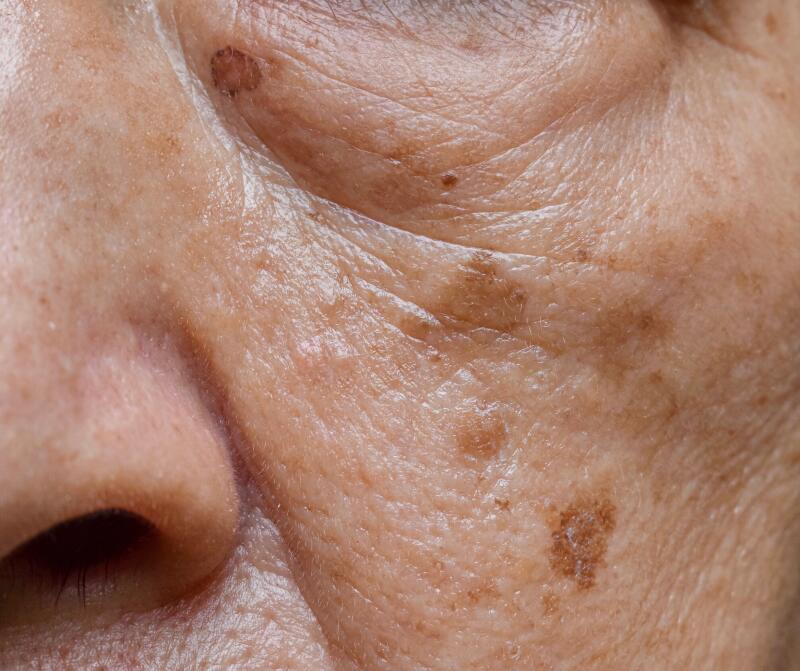-
Your concerns
Our articles to help you gain a better understanding
-
Our solutions
-
DUCRAY Dermatological Laboratories
Our articles to help you gain a better understanding

A lentigo is a specific form of hyperpigmentation, strongly associated with skin aging and sun exposure. A lentigo is also sometimes called solar lentigo, actinic lentigo, senile lentigo or “age spot”.
Lentigines are brown spots that can appear on the skin, nails or mucous membranes. They generally affect the areas exposed to the sun: face, neck, décolleté, backs of hands, forearms, shoulders and back.
There is a particular type of precancerous, then cancerous lesion that is called lentigo maligna, which can frighten some people with lentigines. Most lentigines are totally benign: they are not a sign of any particular disease.
That said, all pigmentation spots must be monitored regularly. This is because a brown spot that appears and/or evolves over time can be a sign of skin cancer.
Lentigines appear on both fair and dark skin, they affect men and women alike, usually from the age of 45, and are associated with other signs of skin aging such as wrinkles or loss of firmness.
Lentigines result from a combination of the sun, which is the main cause of hyperpigmentation, and skin aging, also a major trigger of marks. We also talk about photo-aging, i.e. skin aging that is accelerated or aggravated by sun exposure. Solar lentigines are not necessarily caused by sunburn. Repeated sun exposure alone is sufficient.
Pollution is probably an additional factor involved in the formation of lentigines.
To prevent lentigines from appearing, it is essential that you protect your skin from the sun.
If you want to treat already existing lentigines, you can use appropriate dermo-cosmetics, or even consult a dermatologist.
Hyperpigmentation